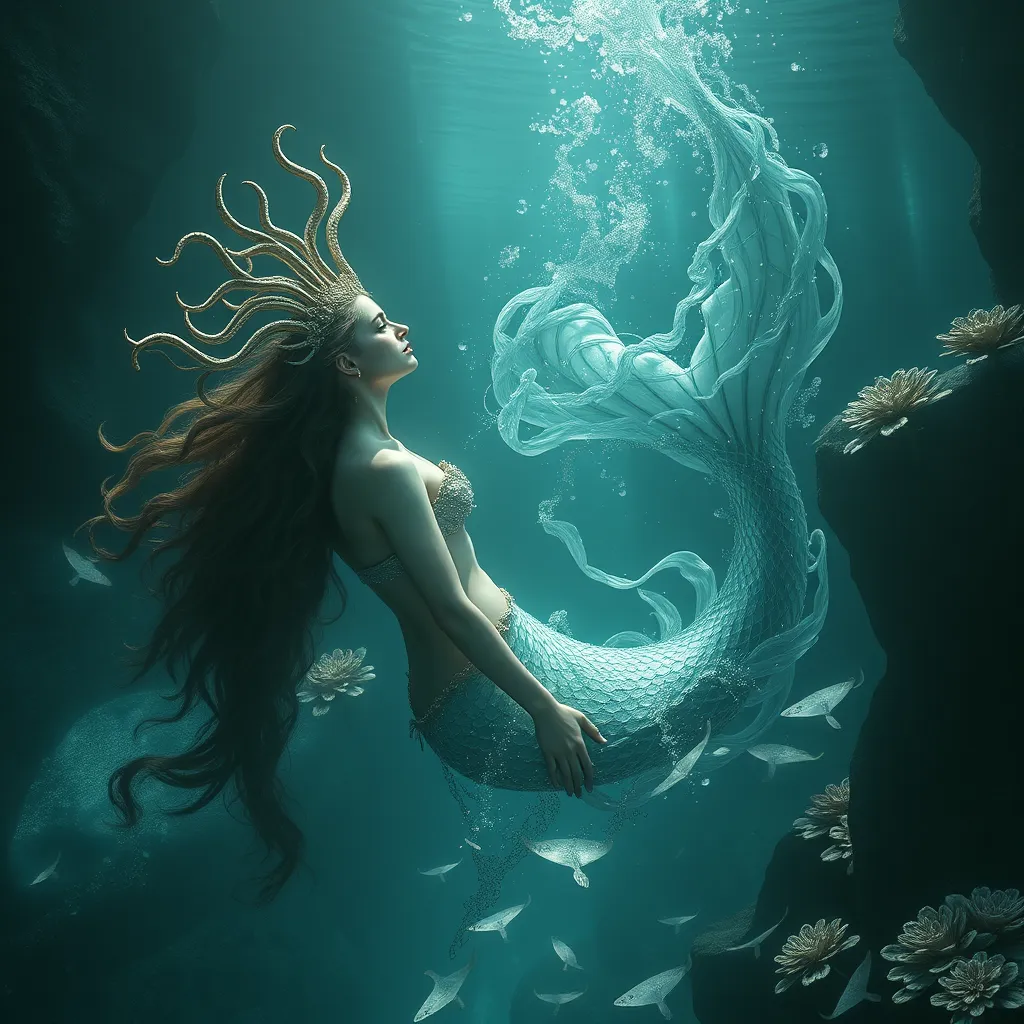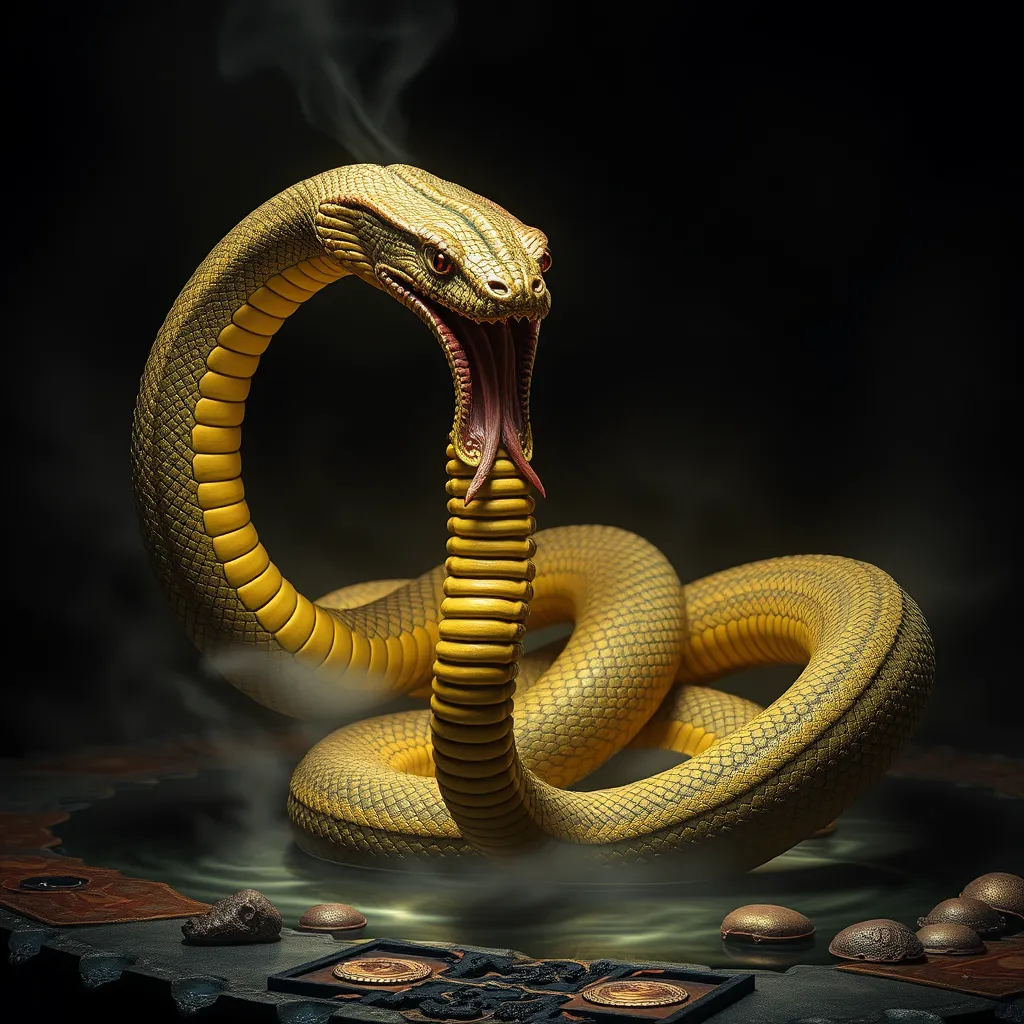The Mermaid’s Art: Exploring the Artistic Depiction of Aquatic Mythologies
I. Introduction
Mermaids, enchanting creatures with the upper body of a human and the lower body of a fish, have captivated the imaginations of cultures across the globe. Their significance varies widely, symbolizing everything from beauty and mystery to danger and transformation. This article delves into the rich artistic depictions of mermaids and aquatic mythologies, exploring how these representations have evolved over time and their impact on culture and society.
II. Historical Context of Aquatic Mythologies
Mermaid legends have their roots in ancient civilizations, revealing a deep connection between humanity and the sea. The origins of these myths can be traced back to various cultures:
- Babylonian Mythology: The goddess Atargatis is often depicted as a mermaid and is one of the earliest known representations.
- Greek Mythology: Sirens, often confused with mermaids, lured sailors to their doom with their enchanting songs.
- Asian Traditions: In Japanese folklore, the story of the ‘ningyo’ describes a fish-like creature that grants immortality.
The influence of maritime culture has been instrumental in shaping these myths. As seafaring became an essential part of life, stories of mermaids emerged, embodying the fears and fascinations associated with the unknown depths of the ocean.
III. Artistic Representations Through the Ages
Throughout history, mermaids have been depicted in various forms of art, each reflecting the cultural context of the time.
A. Ancient artwork: Mermaids in Greco-Roman art
In ancient Greece and Rome, mermaids were often depicted in pottery and mosaics, showcasing their beauty and allure. These artworks typically highlighted the duality of mermaids as both alluring and dangerous.
B. Medieval depictions: Illuminated manuscripts and folklore illustrations
During the Medieval period, mermaids appeared in illuminated manuscripts and folklore illustrations. These depictions often carried moral lessons, cautioning against the dangers of temptation.
C. Renaissance and Baroque interpretations of mermaids
The Renaissance era saw a resurgence of interest in classical mythology, leading to more elaborate representations of mermaids in paintings. Artists like John William Waterhouse and Hans Christian Andersen further popularized mermaid imagery in their works, blending beauty with tragedy.
IV. The Role of Mermaids in Literature and Poetry
Mermaids have not only been a subject of visual art but have also played significant roles in literature and poetry.
A. Famous literary works featuring mermaids (e.g., “The Little Mermaid”)
One of the most celebrated stories is Hans Christian Andersen’s “The Little Mermaid,” which explores themes of sacrifice, love, and identity. This tale has been adapted into numerous forms, including ballets, operas, and films.
B. The evolution of mermaid symbolism in poetry and prose
In poetry, mermaids often symbolize the longing for freedom and the struggles of identity. Poets like Alfred Lord Tennyson and Walt Whitman have utilized mermaid imagery to explore deeper existential themes.
V. Modern Artistic Expressions
In contemporary culture, mermaids have found new life in various artistic expressions.
A. Contemporary art: Mermaids in pop culture, film, and digital media
Today, mermaids are prevalent in pop culture, appearing in films, television shows, and digital art. The Disney adaptation of “The Little Mermaid” has solidified the image of the mermaid as a beloved character in popular media.
B. The influence of feminism and body positivity in modern mermaid art
Modern artists are reinterpreting mermaids through a feminist lens, emphasizing themes of empowerment, body positivity, and self-acceptance. This fresh perspective invites viewers to rethink the traditional narratives associated with mermaids.
VI. Cultural Variations in Mermaid Art
Mermaid depictions vary significantly across cultures, reflecting diverse beliefs and artistic traditions.
A. Comparison of mermaid depictions in Western and Eastern traditions
In Western traditions, mermaids are often portrayed as beautiful, seductive figures, while Eastern depictions, such as the Chinese ‘Ming-Yu,’ emphasize their connection to spirituality and wisdom.
B. Exploration of indigenous aquatic mythologies and their artistic expressions
Indigenous cultures also have rich aquatic mythologies, with creatures like the ‘water spirits’ in African folklore and the ‘selkies’ of Scottish lore. These stories are often expressed through traditional crafts and oral storytelling.
VII. The Symbolism of Mermaids in Art
Mermaids serve as powerful symbols in art, encompassing a range of meanings.
A. Representation of duality: The allure and danger of the sea
Mermaids epitomize the dual nature of the sea—its beauty and its peril. This duality is often reflected in artistic representations, where mermaids are depicted as both enchanting and threatening.
B. Mermaids as symbols of transformation and identity
Mermaids also symbolize transformation, reflecting the journey of self-discovery. This theme resonates in both historical and contemporary art, inviting audiences to explore their own identities.
VIII. Conclusion
In conclusion, mermaids have played a significant role in art and culture throughout history. From ancient legends to modern interpretations, they continue to inspire artists and audiences alike. The enduring legacy of aquatic mythologies highlights our fascination with the sea and its mysteries, reminding us of the beauty and danger that lie beneath the surface.




